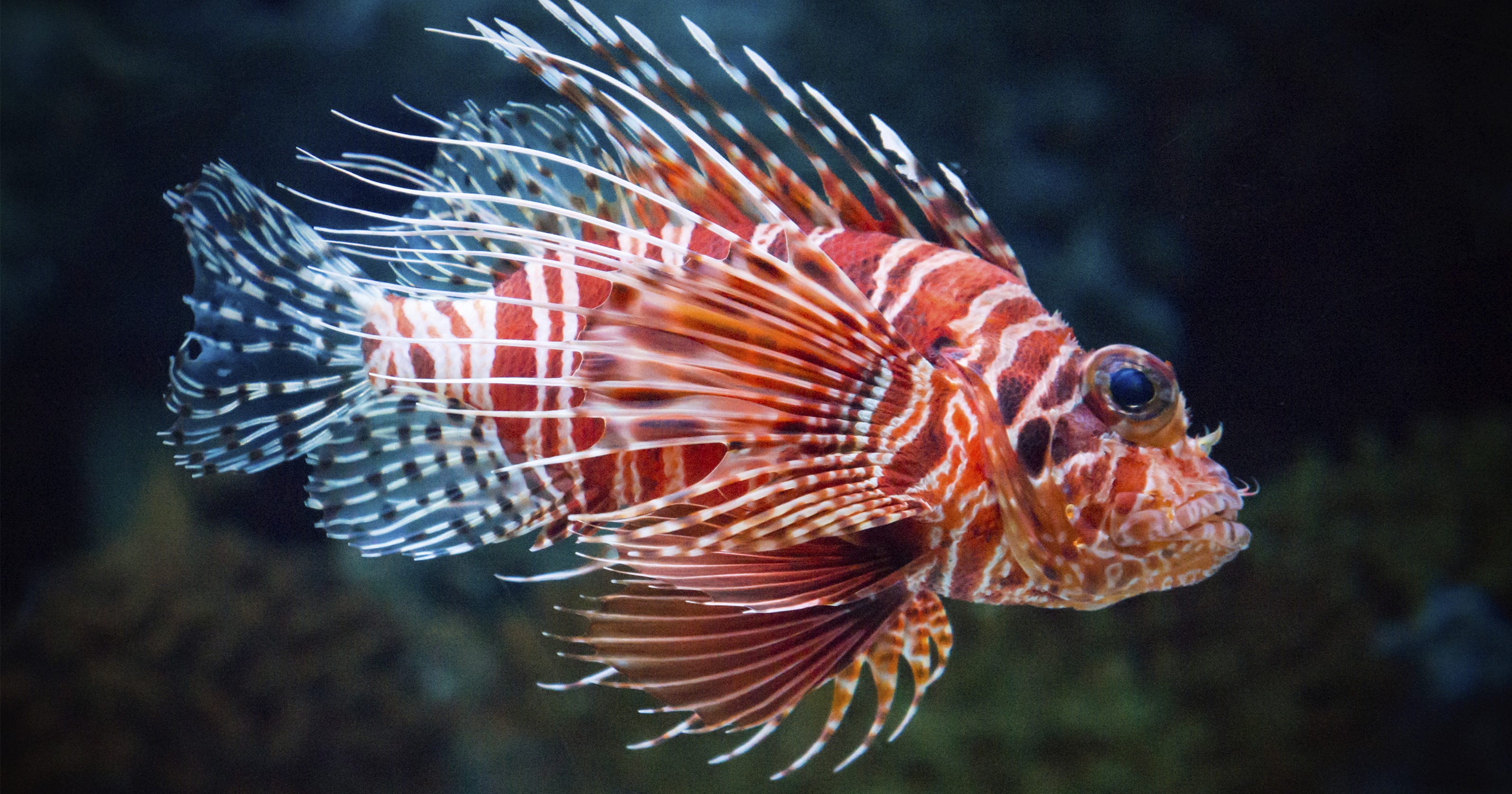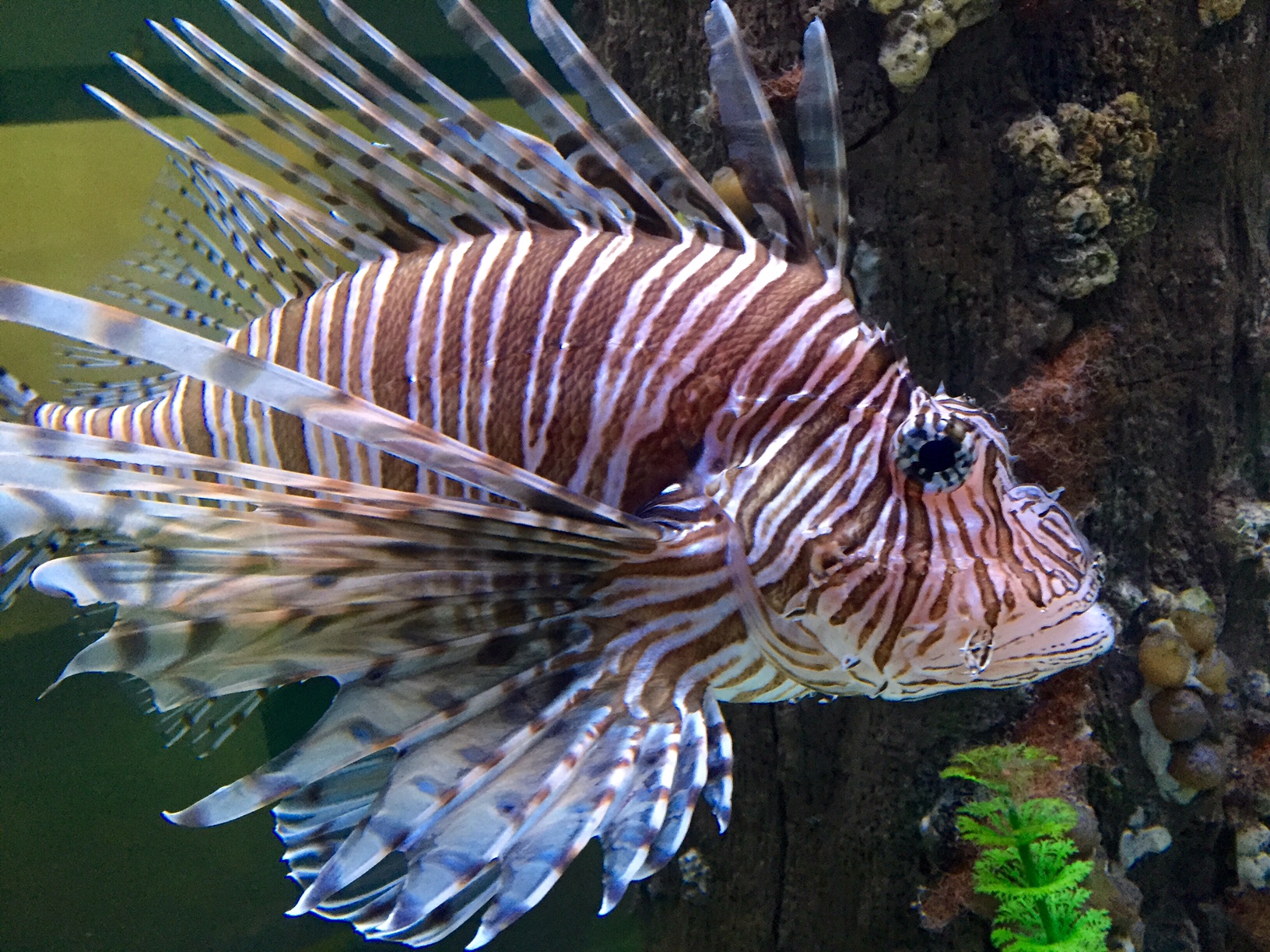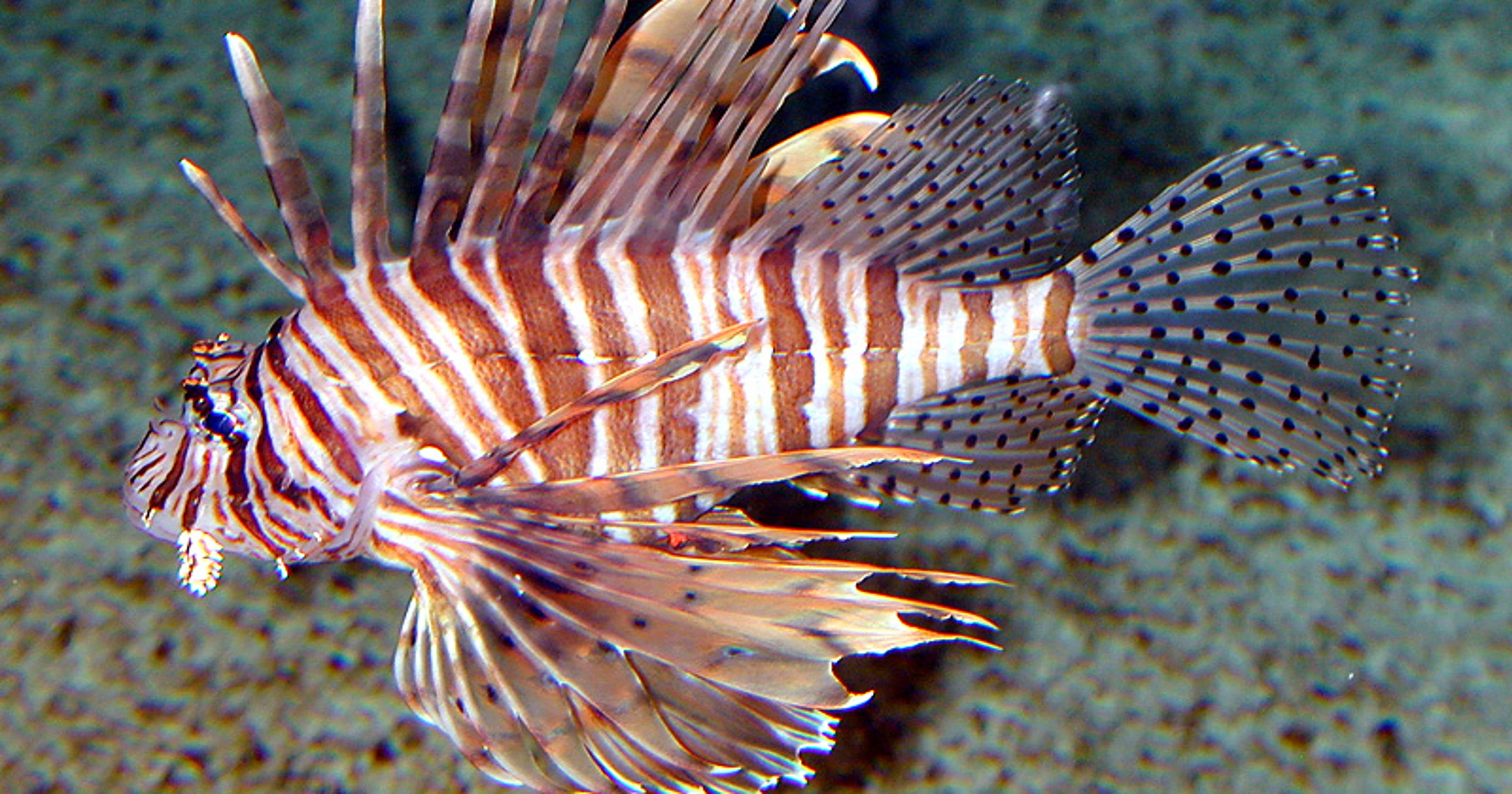
Introduction
Lion Fish, also known as Pterois, are a species of venomous marine fish that belong to the family Scorpaenidae. These fascinating creatures are known for their distinctive appearance and vibrant colors, making them a popular choice among aquarium enthusiasts. However, their beauty hides a dangerous secret, as their venomous spines can cause painful stings and pose a threat to other marine life.

Appearance
Lion Fish are easily recognizable due to their unique appearance. They have a long, slender body covered in colorful stripes and patterns, which serve as a form of camouflage in their natural habitat. These fish can grow up to 17 inches in length and have elaborate pectoral fins that resemble a lion's mane, hence their name. Their vibrant colors vary from red, brown, orange, to black, creating a striking and beautiful display.

Habitat
Lion Fish are native to the warm waters of the Indo-Pacific region, including the Red Sea and the western Pacific Ocean. They can be found in coral reefs, rocky crevices, and lagoons. These fish have also been introduced to other parts of the world, such as the Caribbean and the Gulf of Mexico, where they have become invasive species.

Feeding Habits
Lion Fish are carnivorous predators that primarily feed on small fish and crustaceans. They have an impressive set of teeth and a large mouth, allowing them to swallow prey whole. These fish are ambush hunters, using their camouflage and slow movements to approach their unsuspecting victims. Their venomous spines are also used as a defense mechanism against potential threats.

Reproduction
When it comes to reproduction, Lion Fish follow a unique mating ritual. The male fish will perform a courtship display to attract the female, which involves shaking their bodies and extending their fins. Once the female is ready to spawn, she releases a cluster of eggs, which the male fertilizes externally. The eggs are then left to float freely in the water until they hatch, typically within two days.

Invasive Species
Lion Fish have become a major concern as an invasive species in some parts of the world. Due to their aggressive feeding habits and lack of natural predators, their population can rapidly increase, causing harm to the local marine ecosystem. They compete with native species for food and space, threatening the balance of the ecosystem. Efforts are being made to control their population and minimize their impact on the environment.

Conservation
Conservationists and marine biologists are working to raise awareness about the threats posed by Lion Fish and educate the public about responsible aquarium keeping. It is essential to prevent the release of these fish into the wild and promote sustainable fishing practices. By understanding the impact of invasive species like Lion Fish, we can take steps to protect our oceans and preserve the delicate balance of marine life.

Conclusion
Lion Fish are undoubtedly stunning creatures, with their vibrant colors and unique appearance. However, their invasive nature and venomous spines make them a double-edged sword. It is crucial to appreciate these fish responsibly, keeping them in controlled environments and preventing their release into the wild. By doing so, we can admire their beauty while preserving the delicate ecosystems they inhabit.